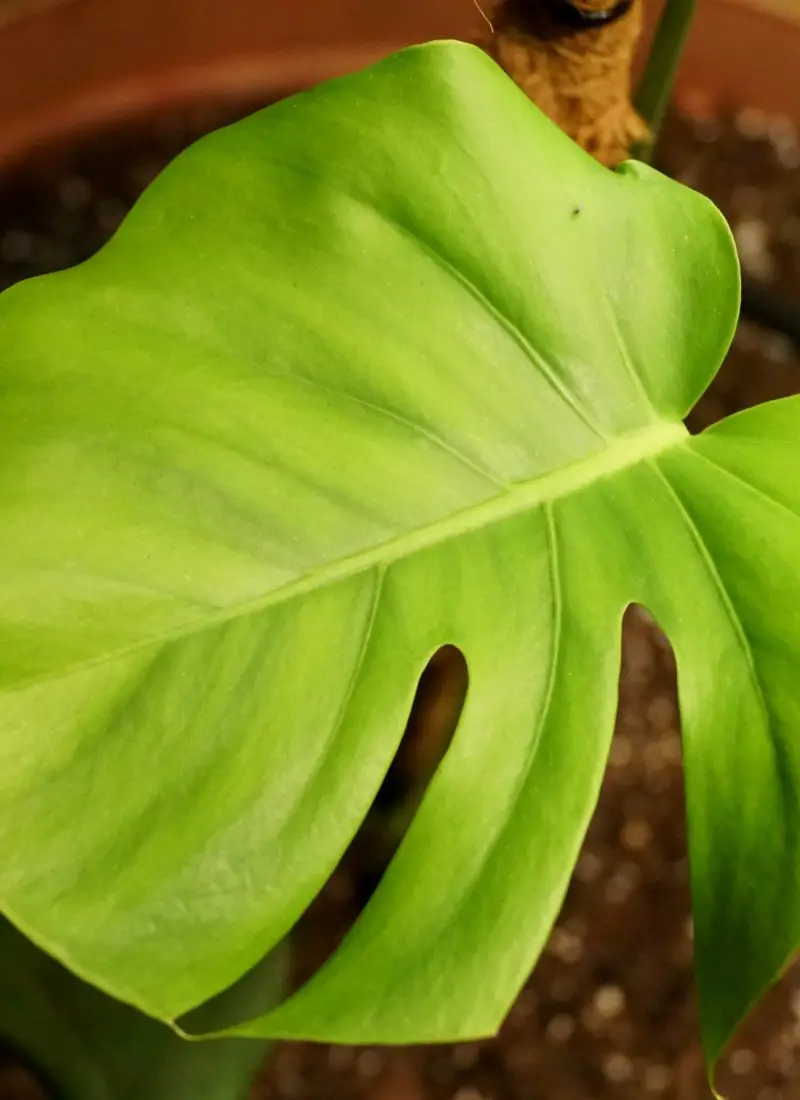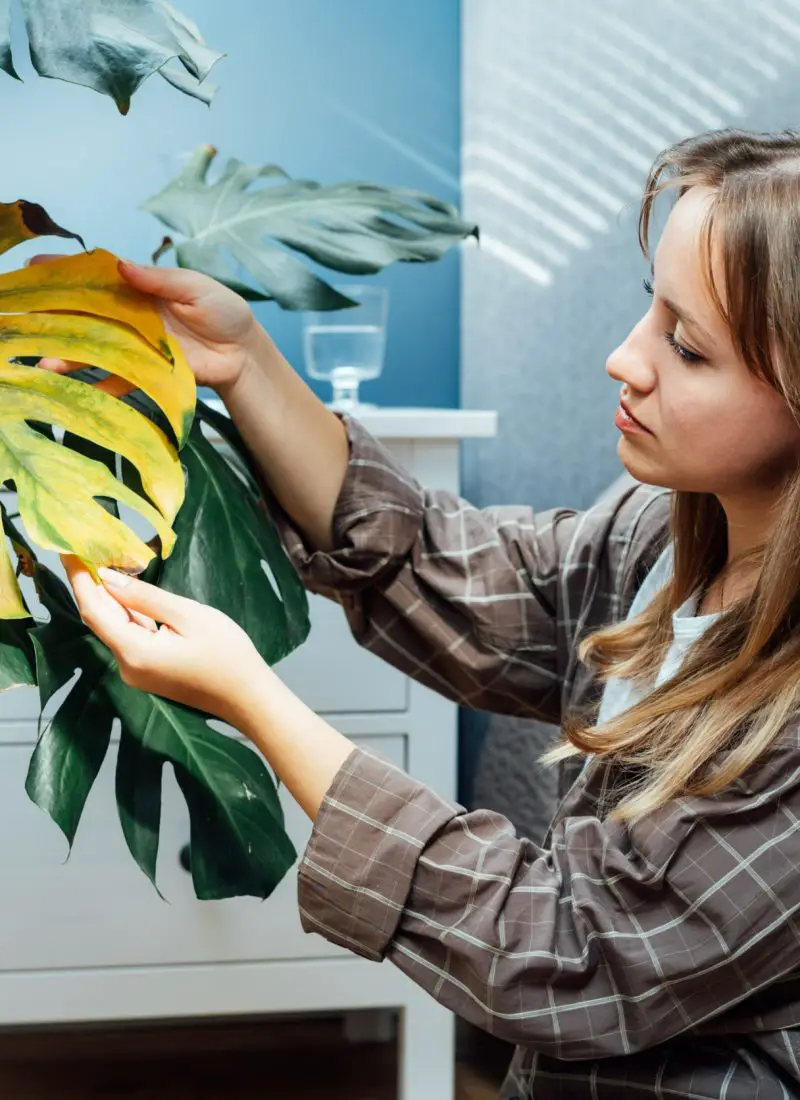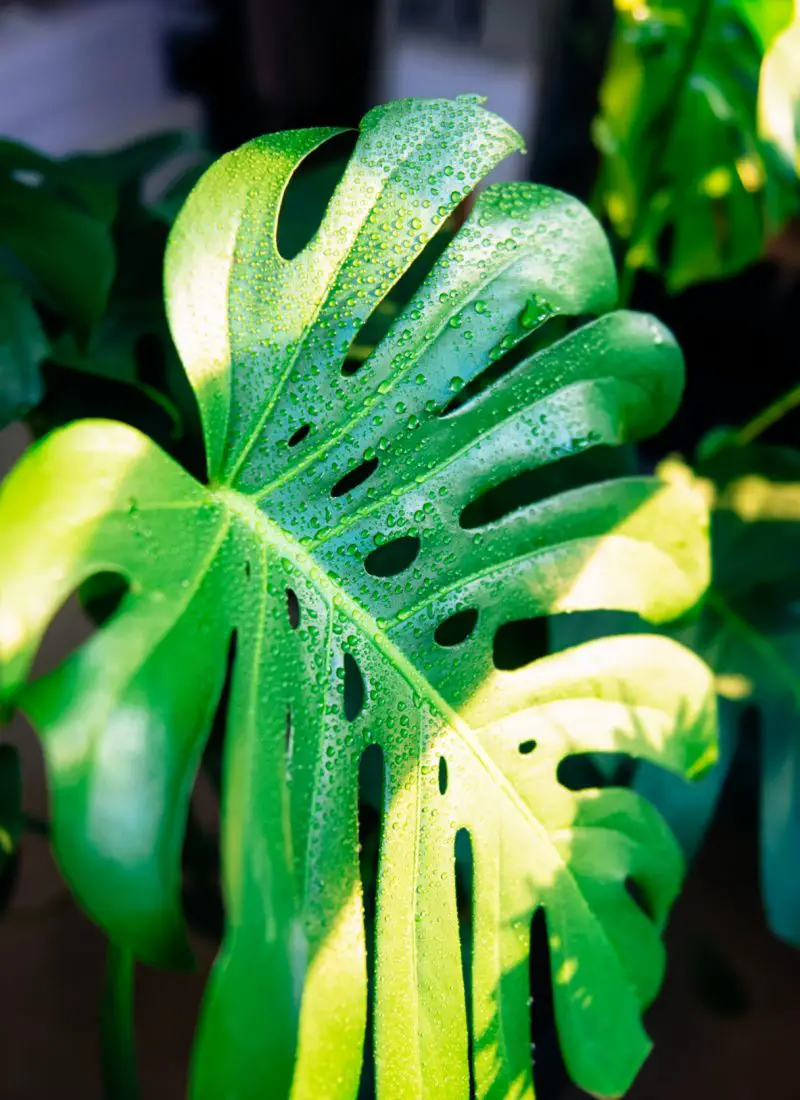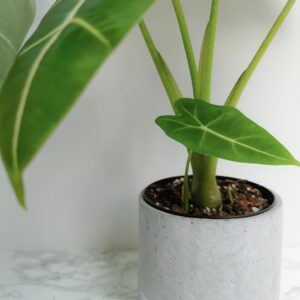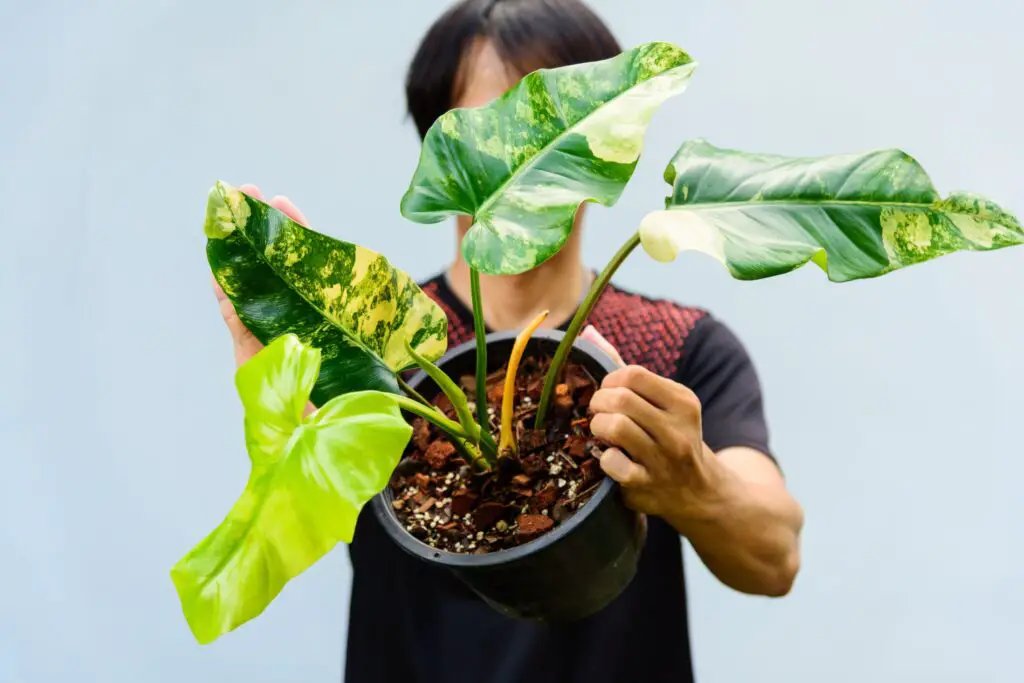
There are loads of Philodendron varieties out there, but did you know there is one that has leaves that look like an Elephant ear? It won’t fly like Dumbo, but it sure is a beauty.
Elephant Ear Philodendron is a large-leafed, climbing Philodendron variety. It has the same basic care as other Philodendrons but requires additional vertical support for the plant to grow upwards. One of its known cultivars is ‘Calkin’s Gold’, loved for its golden leaves with green streaks.
Below, I elaborate more on this plant along with its care needs:
(As an Amazon Associate, I earn from qualifying purchases.)
Table of contents
What is an Elephant Ear Philodendron?
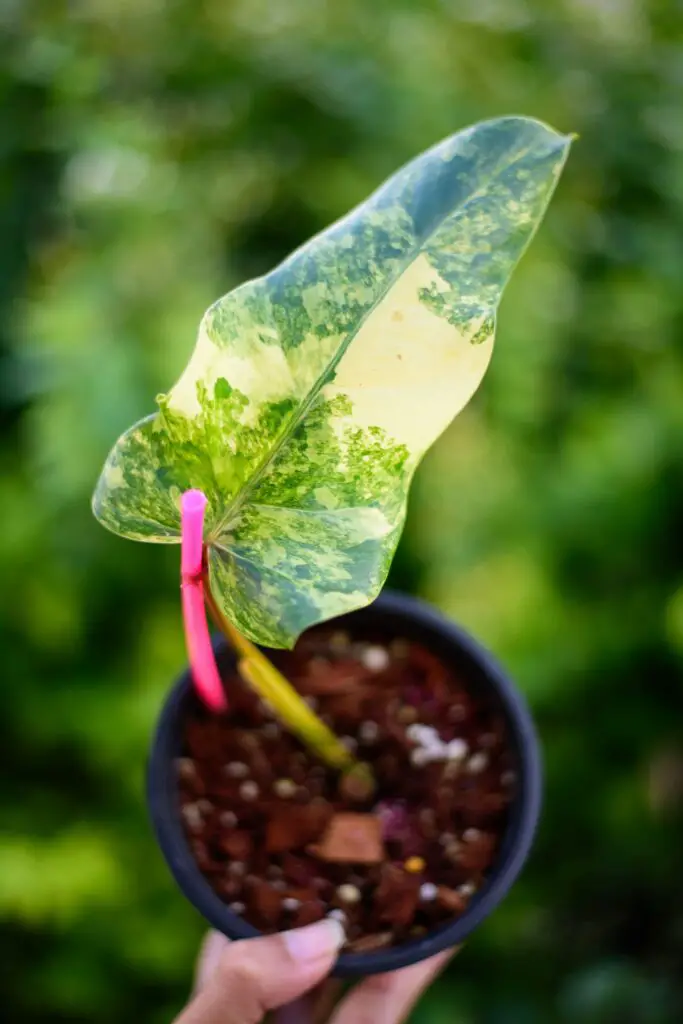
It is a tropical plant with narrow, spade-shaped leaves about 1.5 to 2 feet long, resembling an elephant’s ears. Like all Philodendrons, it belongs to the Arum/Araceae family – which means that taking care of them is similar to regular Philodendrons. But that also means they are toxic upon ingestion to both pets and humans. So if you have bitey cats or dogs and grabby children, keep them far away from this plant.
Despite its name, this plant doesn’t belong to the three main groups of Elephant ear plants, i.e., Alocasia, Colocasia, and Xanthosoma. The main difference between these plants and the Elephant Ear Philodendron is that the main groups of Elephant ear plants grow from corms or tuberous roots. However, the Philodendron has a regular root system. If you’re interested to know more about Elephant ear plants, you can read the following articles:
- Alocasia Vs Giant Philodendron: How to Tell Them Apart
- Colocasia Vs Alocasia: How To Tell Them Apart
- The Truth About Alocasia Aerial Roots
Elephant Ear Philodendron is also known as ‘Spade-leaf Philodendron’. Interestingly, this name is used for another similar-looking plant called ‘Philodendron Hastatum’. They are said not to be the same, but there’s very limited literature talking about the differences between the two plants. So, take that with a grain of salt.
The scientific name for this plant is ‘Philodendron Domesticum’;. However, based on worldfloraonline.org, this is an ‘Unchecked’ name. I dug a little deeper and found out this name has yet to officially be accepted because there is not much information on the plant itself. But it is on the ‘waiting list’ to be investigated further – when that will be, we don’t know. Rest assured, we’ll update this article as more details about the plant pop up.
Elephant Ear Philodendron Care 101
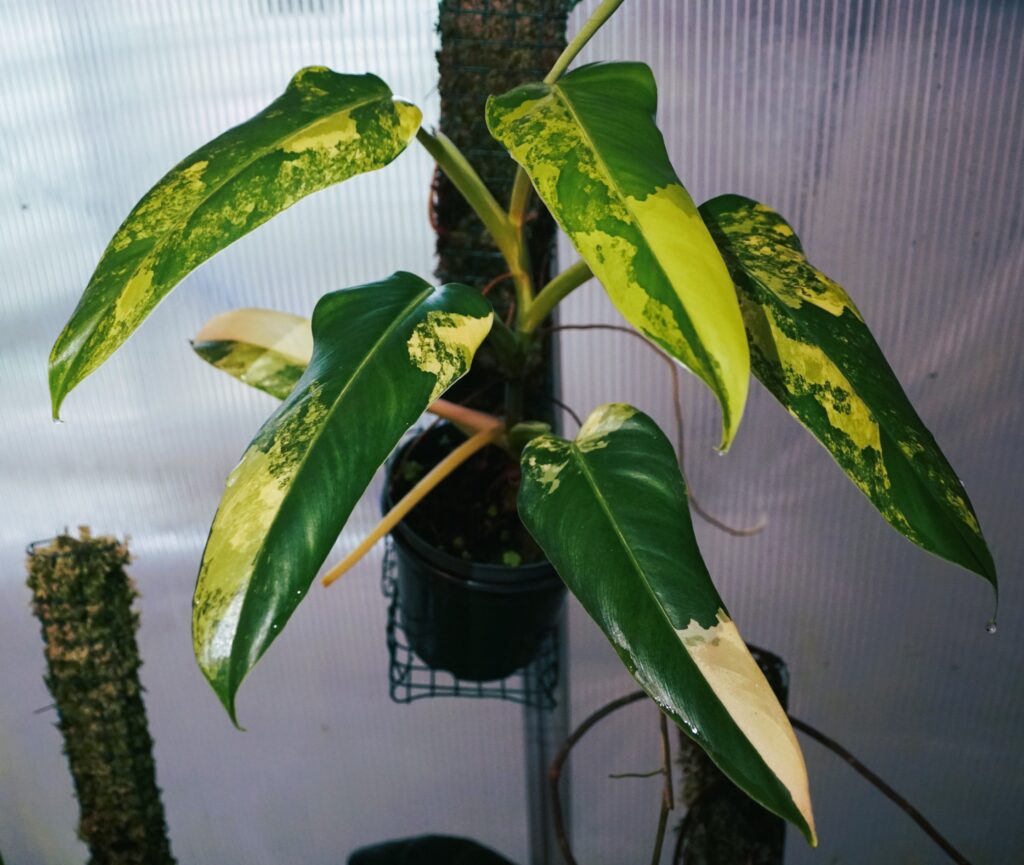
As I’ve mentioned in the introduction, caring for an Elephant Ear Philodendron is like taking care of any other Philodendron variety. But for total newbies, here’s what you need to know:
- Sun: Plenty of indirect sunlight, keeping it away from direct light to avoid scorching the leaves. If the leaves are yellow, the plant may need more light.
- Soil: Well-draining and slightly acidic soil with pH 6. Ensure the pot has drain holes to prevent standing water.
- Water: Weekly to biweekly watering after the 1-2 inches of the soil’s surface dries out. When in doubt, feel the potting media first before giving the plant a thorough soak. If the leaves are yellow and soft, you may have overwatered the plant. Act fast and follow the steps in this ‘How to Fix Root Rot’ article to save your plant ASAP.
- Fertilizer: Monthly feeding in spring and summer using an all-purpose fertilizer. If the leaf tips are brown and curled up, you may have overfertilized it. Hold off on fertilizing and flush the plant with running water several times before leaving it dry for a few days.
- Temperature: 65 to 80° F. In cold regions, it’s best to keep the plant indoors all year round as it doesn’t do well in chilly temperatures.
- Humidity: 40-60% humidity levels to encourage better growth. Use a humidifier if needed, but the plant will generally tolerate low humidity indoors. You can learn more about how humidity is essential for tropical plants in this ‘4 Basic Houseplant Care’ article.
- Vertical support: Place a moss totem pole during the initial potting process for the plant to cling to and climb upwards. Using a heavy pot is also advisable to prevent the plant from toppling over as it grows. To get started, follow the instructions in this ‘Train Indoor Monsteras to Climb’ article. It has the same basic principles to help potted climbing plants grow up a stake/pole.
Additional Care for an Elephant Ear Philodendron
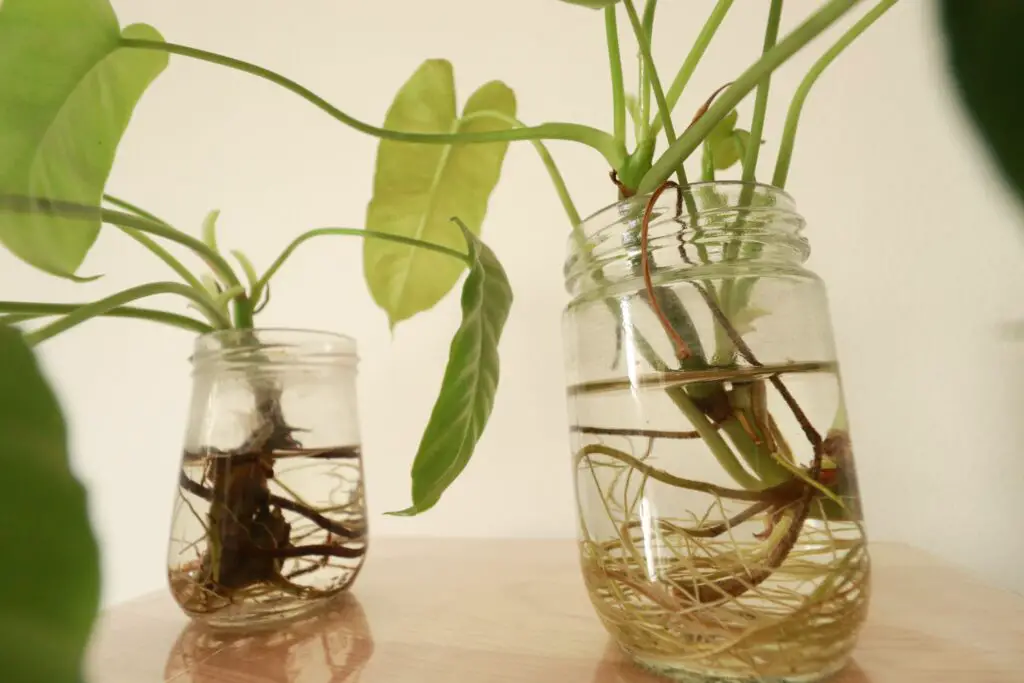
Once you’ve covered the plant’s essential care, here’s what your Elephant Ear Philodendron needs in terms of maintenance:
- Prune: Only trim off old and damaged leaves. You can cut back the plant if it gets too tall for your liking, but do this only after every 2-3 years.
- Propagate: Use healthy stem cuttings with at least 2-3 nodes to create more mini versions of the plant. You can follow the instructions here in this ‘Ultimate Propagation’ article.
- Repot: Every 2-3 years into a slightly larger pot. Be careful when moving the moss totem pole, as this may cause the plant to snap from the support during the process.
- Pest & Disease check: Do a weekly investigation to ensure there’s no infestation/infection on the plant. The most common pests that attack this plant are spider mites, scales, mealybugs, and aphids. You can learn more about them in this ‘Common Houseplant Pest & Disease’ article to help you eliminate them if they appear.
Frequently Asked Questions About Elephant Ear Philodendrons
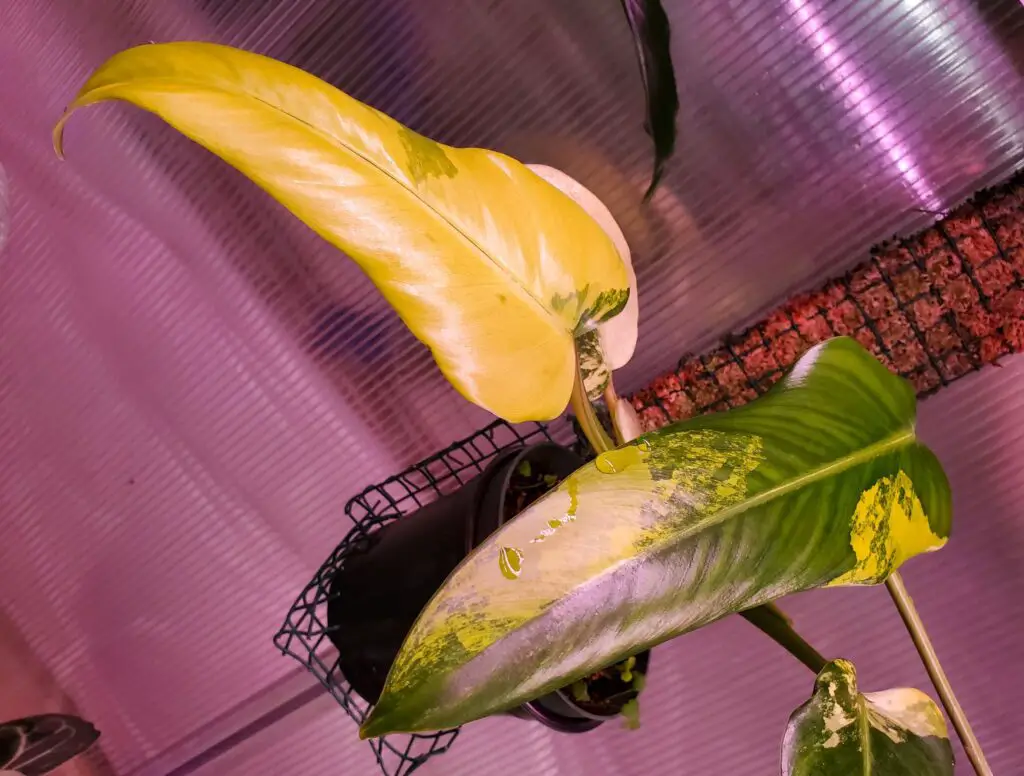
There are two main differences between an Alocasia and an Elephant Ear Philodendron:
1. Alocasias are not climbing plants, while Elephant Ear Philodendrons grow aerial roots to latch onto vertical support and develop upwards.
2. Alocasias grow from corms, i.e., tuberous roots, while Elephant Ear Philodendron has a regular root system.
The Giant Philodendron (Philodendron Giganteum) is a different Philodendron variety from an Elephant Ear Philodendron (Philodendron Domesticum). The former is known to grow significantly larger leaves than the latter and is often confused for an Alocasia plant. But both share the same basic care as any Philodendrons.
Giant Philodendron has huge and broader arrow-shaped leaves than Elephant Ear Philodendron. But it’s relatively hard to tell them apart when they’re still in their juvenile stage as they look like other Philodendrons. But give it time, and you’ll see their differences as they mature.
An Alocasia is not a Philodendron variety. However, both belong to the same Arum/Araceae family but under their own respective genera. They have distinctly different physical features – for example, Alocasia leaves tend to have more vibrant colors and markings than regular Philodendrons.
Final Words
All in all, an Elephant Ear Philodendron is another one of many rare plants to keep an eye out for. Who knows, maybe you’ll find them waiting for you in a specialty plant shop. Happy planting!
References:
- Jan 15, F. | H. 1509 | U., & Print, 2016 |. (n.d.). Philodendron. Home & Garden Information Center | Clemson University, South Carolina. https://hgic.clemson.edu/factsheet/philodendron-pothos-monstera/
- Outstanding Interior Plants. (n.d.). Aggie-Horticulture.tamu.edu. Retrieved November 8, 2022, from https://aggie-horticulture.tamu.edu/databases/interiorscape/Philodendron_domesticum.html
- Philodendrons as Interior Plants (David Trinklein). (n.d.). Ipm.missouri.edu. Retrieved November 8, 2022, from https://ipm.missouri.edu/meg/2014/1/Philodendrons-as-Interior-Plants/
- Philodendron domesticum. (n.d.). Bessey Greenhouse (Richard W. Pohl Conservatory). Retrieved November 8, 2022, from https://greenhouse.eeob.iastate.edu/philodendron-domesticum
- Philodendron domesticum G.S.Bunting. (n.d.). Www.gbif.org. Retrieved November 8, 2022, from https://www.gbif.org/species/3604671
- Philodendron ×domesticum G.S.Bunting. (n.d.). Worldfloraonline.org. Retrieved November 8, 2022, from http://worldfloraonline.org/taxon/wfo-0000268585
- Philodendrons – University of Florida, Institute of Food and Agricultural Sciences. (n.d.). Gardeningsolutions.ifas.ufl.edu. Retrieved November 8, 2022, from https://gardeningsolutions.ifas.ufl.edu/plants/houseplants/philodendrons.html
- Plant database entry for Philodendron “Calkin’s Gold” with 2 images and 12 data details. (n.d.). Garden.org. Retrieved November 8, 2022, from https://garden.org/plants/view/149198/Philodendron-Calkins-Gold/
- Plant database entry for Spade Leaf Philodendron (Philodendron x domesticum) with 20 data details. (n.d.). Garden.org. Retrieved November 8, 2022, from https://garden.org/plants/view/774927/Spade-Leaf-Philodendron-Philodendron-x-domesticum/
- Yard and Garden: Growing Philodendrons. (n.d.). News. Retrieved November 8, 2022, from https://www.extension.iastate.edu/news/yard-and-garden-growing-philodendrons


